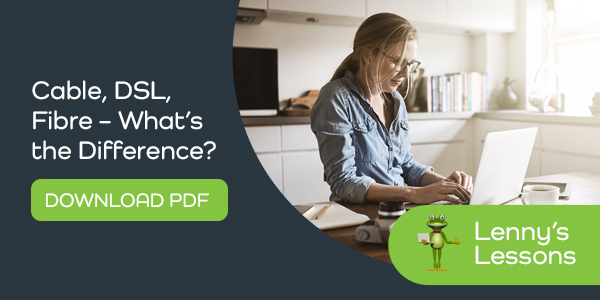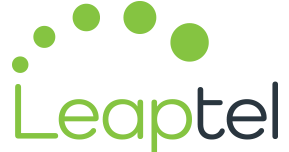Australia’s internet tech landscape is complex – mind-bendingly so, in fact. So, where’s the best place to begin on your journey of enlightenment?
If you don’t know the difference between ADSL and ESP, never fear – Leaptel’s here to provide some much-needed clarification. At Leaptel, we’ve spent our careers unpicking the points of difference between different internet technologies.
Our resident expert frog, Lenny, pops up again to guide you safely through the ins and outs of Australia’s NBN.
Considerations
G’day, fellow internet enthusiasts – today, we’ll cover three major connection types – Cable, DSL and Fibre. I’ll explain how they’re similar … but also different in several important ways.
To function optimally, an internet connection has to provide a highway for all that delicious data to flow down as smoothly as possible – no potholes, roadworks or detours.
Over a decade ago, Australia began a complete overall of its internet infrastructure when work commenced on the National Broadband Network (NBN). The NBN’s backbone is optical fibre – but that final length to your house could be one of several technologies.
So, what does this mean? Let’s dive further.
Consideration #1: DSL ‘Digital Subscriber Line’.
This technology uses copper wires, accelerated by special compression technology. DSL’s souped-up version, ADSL2+, offers up to 24 megabits/second (Mbps) download speeds, depending on the distance from the exchange.
This was the first major upgrade available in Australia from dial-up. The NBN’s arrival repurposes the ADSL network from a combined voice and internet line to a pure internet line.
NBN utilises a type of DSL (called VDSL) to boost speeds. They’re also installing node boxes to reduce telephone copper wire to below 1.5km, offering faster speeds to many premises.
Consideration #2: Cable internet.
Cable has existed in Australia since the late 1990s, before ADSL became available around the year 2000.
However, Cable internet was not available universally across Australia, as the cable network only existed in selected suburbs of major cities. So for many, ADSL was the only available upgrade to dial-up internet.
NBN’s upgrade to the cable network offered customers higher upload speeds, which are essential in the age of cloud-based computing. With further upgrades, NBN believes the cable network will support up to 1Gbps.
Consideration #3: Fibre.
This technology’s maximum speed is well over 1 Gigabit/second (1000Mbps), with recent lab trials showing deliverable speeds of up to 10Gbps.
Not every home in Australia has access to FTTP, though – in fact, around 20% of them do. If you live outside an FTTP area, you’ll be hooked up with an alternative technology type described above.
Tips
If you’re interested in finding the perfect internet connection for your needs, here are some juicy tips from your resident tech-focused amphibian!
- Speed is relative. In addition to FTTP, Leaptel’s Cable and DSL connections provide substantial bandwidth and performance for a wide range of home uses.
- As an internet subscriber, you can’t usually choose a connection type. This is because the type of connection available to you is dictated by where you live.
- When you’re connecting to the internet, pay attention to how much data you’re likely to use. Our plans suit every type of data user, from light to insatiable – so, hop to it folks!


